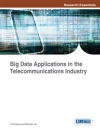This book focuses largely on enabling technologies for network convergence. A principal aim is to show where parallel functions exist in fixed and mobile voice network architectures and to explain how these functions will be combined. The authors describe the components of a future converged architecture and consider the following key aspects: Qo S Requirements, Proposed Solution Architectures, Protocol and Interface options, Underlying Network Issues and Security issues. The book also compares and describes initiatives from several standards bodies working to simplify to a clean architecture and a common set of protocols. The impact on a Multi Protocol Label Switching (MPLS) network, the preferred method of transport for the core network, will be considered in detail.
Tabela de Conteúdo
Foreword.
Preface.
1 Introduction.
1.1 Motivation for Network Convergence.
1.2 The Core Network.
1.3 Legacy Service Requirements.
1.4 New Service Requirements.
1.5 Architectures.
1.6 Moving to SIP.
1.7 Growing Revenue.
1.8 Network Operators – Dealing with Convergence.
1.9 Enabling Technologies for Converged Networks.
2 Call Control in the NGN.
2.1 NGN Network Architectures.
2.2 The Operation of Call Control.
2.3 Call Processing in the Legacy PSTN.
2.4 Call Processing in an NGN Call Agent.
2.5 The Basic Call State Machine.
2.6 Call Signalling in the NGN and the Role of SIP.
2.7 The SDP Protocol.
2.8 Media Transport Using RTP and RTCP.
2.9 Addressing Issues.
2.10 Summary.
References.
3 Securing the Network and the Role of Session Border
Gateways.
3.1 General Principles of Security and the NGN.
3.2 The Problem of Secrets.
3.3 IPSec.
3.4 Session Border Controllers and Session Border Gateways.
3.5 Protecting the PSTN Call Control Platforms in the NGN.
3.6 Summary.
References.
Contents.
4 The NGN and the PSTN.
4.1 Circuits and What they Carry.
4.2 Signalling and Supervision.
4.3 The Birth of the Call Agent.
4.4 Media Gateways.
4.5 A Look at Media Gateway Control Protocols.
4.7 Summary.
References.
5 Evolution of Mobile Networks and Wireless LANs.
5.1 Introduction.
5.2 1G and 2G Mobile Networks.
5.3 Development of 3G.
5.4 Release 99 UMTS Architecture.
5.5 General Packet Radio Service (GPRS).
5.6 Enhanced Data Rates for GSM Evolution (EDGE).
5.7 Release 4 UMTS Architecture.
5.8 Wideband Code Division Multiple Access (W-CDMA).
5.9 Introduction to IMS.
5.10 GPRS Access to IMS.
5.11 Broadband Data Wireless Access.
5.12 Wireless LAN Interworking.
5.13 Mobile TV and Video.
5.14 Related Work in other Standards Bodies.
Summary.
Appendix.
References.
6 Value-added Services.
6.1 Introduction.
6.2 Service Creation and Delivery Technologies.
6.3 Service Orchestration.
6.4 Service Orchestration Examples.
6.5 Service Delivery Platforms.
Summary.
References.
7 Core Network Architecture.
7.1 The Convergence Layer: Multiprotocol Label Switching.
7.2 Virtual Private Networks.
7.3 Summary.
References.
8 Guaranteeing Quality of Service in the NGN.
8.1 Introduction.
8.2 Defining Qo S.
8.3 Qo S in IP Networks.
8.4 Traffic Engineering in the MPLS Core.
Contents.
8.5 Video Services.
8.6 Business VPN Services.
8.7 Extending Qo S for VPN Services across Multiple
Providers.
8.8 Qo S and the PSTN.
8.9 Qo S Architectures for PSTN Services.
8.10 The MSF Architecture for Bandwidth Management.
8.11 Protecting the Network from Application Layer Overload.
8.12 Summary.
References.
Index.
Sobre o autor
Dr. Juliet Bates is a Principal Consultant within the
Professional Services Division of Alcatel Networks, providing
design advice on the engineering and traffic management of
Broadband Networks. Juliet’s specialist areas include fixed and
mobile voice access for transmission over ATM, IP and MPLS.
Juliet has been MSF Technical Committee Vice Chair since April
2004.Chris Gallon is a Senior Network Architect at Fujitsu
Telecommunications Europe, working in areas including end-to-end
network design for triple play services, UK PSTN interconnect
protocols, DSL and Fibre Access Solutions, PSTN evolution and
Bandwidth Management. He has been MSF Protocol and Control
Working Group Chair since February 2002.












